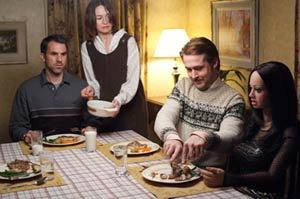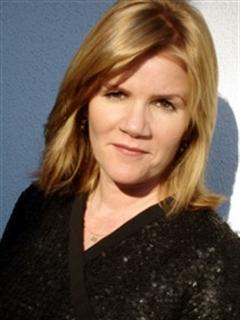
Meet Lars Lindstrom (Ryan Gosling): an emotionally withdrawn, idiosyncratic, and socially awkward young man who lives in the garage owned by his older brother, Gus (Paul Schneider), and sister-in-law, Karin (Emily Mortimer).
One day, a large wooden box is delivered and Lars introduces his girlfriend, Bianca, a shy, half-Brazilian/half-Danish, wheelchair-bound missionary. To Lars, Bianca is a real girl who “God made to help people,” but to his bewildered family and church-going town, Bianca is an anatomically correct life-sized doll he ordered from the internet.
When the family doctor/psychologist, Dagmar, diagnoses Lars as having a delusion that will eventually grow out in time, she also suggests the family and the town “go along” with the delusion by accepting Bianca as a real person. While some are aghast at the idea of treating a doll as a person, they are gently reminded by the priest, What Would Jesus Do?
To help Lars work through his delusion, the small and snow-logged town embraces Bianca from giving her a makeover to bathing her. Through these small actions, the movie’s greatest theme and the subject of a particular sermon is revealed—”to love one another with a true love” because “love is God in action.” Slowly, through Bianca, Lars opens up in small ways—complimenting his office’s receptionist, talking to a girl (Margo) who has a crush on him at work, and attending a birthday party.
Without resorting to gross caricature, Ryan Gosling (in an Oscar-worthy nod) deftly and softly portrays Lars as a more melancholy and complicated Forrest Gump–a child-like, sensitive, contemplative, and religious man who’s not sure how to grow up. Even though he believes hugs burn his skin and he holds on to his late mother’s scarf like a security blanket, Gosling still infuses Lars with an innocence that allows room for sympathy (not pity) and for acceptance.
While no big revelations appear to clarify Lars’s psyche, conversations between Gus and Karin and sly one-on-one sessions with Dagmar do hint at possibilities of why he developed such a delusion. Small, past sadnesses (a mother’s death in childbirth, a detached father) serve as explanations into how Lars became aloof and learned to bottle up reality.
Coming soon to Beliefnet, an interview with Ryan Gosling…stay tuned.


